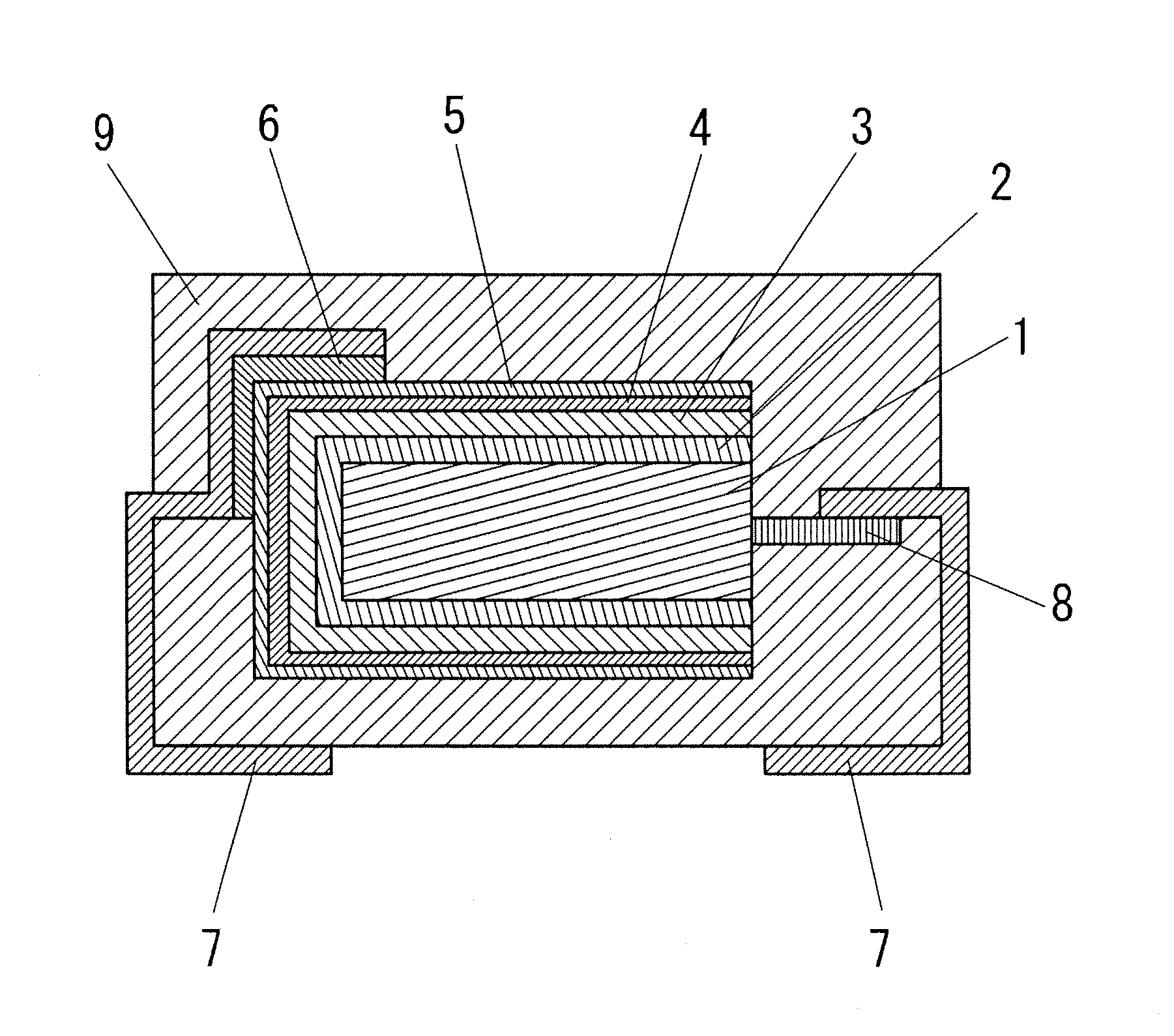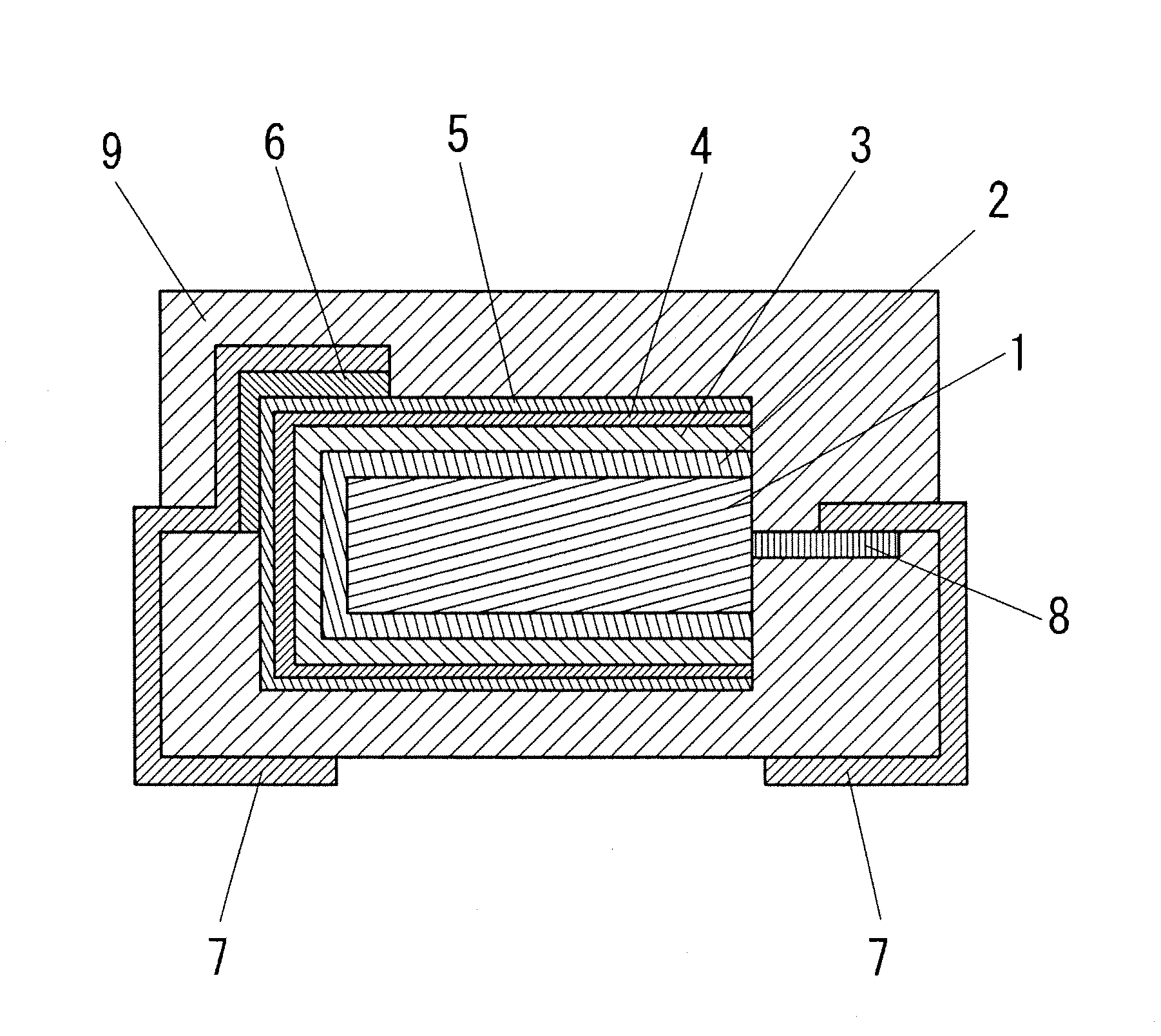Electroconductive polymer composition, method for producing the same, and solid electrolytic capacitor using electroconductive polymer composition
a technology of electroconductivity and polymer composition, which is applied in the manufacture of electroconductor, non-metal conductor, conductor, etc., can solve the problems of loss of electroconductivity, lc may increase, and oxide film, and achieve the effect of increasing the viscosity of the electroconducting polymer suspension solution, high electroconductivity, and not decreasing the electroconductivity
- Summary
- Abstract
- Description
- Claims
- Application Information
AI Technical Summary
Benefits of technology
Problems solved by technology
Method used
Image
Examples
example 1
(First Step)
[0061]A straight-chain polystyrene sulfonic acid (weight average molecular weight Mw=50,000) (20 g) which is a polyanion and a sorbitol polyglycidyl ether (0.4 g) which is a cross-linking agent were dissolved in water (100 mL) which is a solvent. The obtained solution was kept at a temperature of 80° C. and was stirred for 24 hours to react the straight-chain polystyrene sulfonic acid with the sorbitol polyglycidyl ether, and thereby to obtain a polyanion having a cross-linked structure. It was confirmed by FT-IR measurement that the straight-chain polystyrene sulfonic acid was reacted with the sorbitol polyglycidyl ether. Specifically, it was confirmed in the FT-IR spectrum that a peak derived from sulfonic group which is observed at around 1190 cm−1 decreased and that a peak derived from sulfonate group which is observed at around 1348 cm−1 increased.
(Second Step)
[0062]3,4-ethylenedioxy thiophene (5 g) which is a monomer giving an electroconductive polymer, camphor sul...
example 2
[0067]An electroconductive polymer suspension solution and an electroconductive polymer composition film were produced in the same manner as in Example 1 except that a straight-chain poly(maleic acid) (weight average molecular weight Mw=50,000) is used as a polyanion in the first step. In the same manner as in Example 1, the viscosity of the produced electroconductive polymer suspension solution and the electroconductivity of the produced electroconductive polymer composition film were evaluated and the results are shown in Table 2.
example 3
[0068]An electroconductive polymer suspension solution and an electroconductive polymer composition film were produced in the same manner as in Example 1 except that a sorbitol polyglycidyl ether (0.1 g) was used as a cross-linking agent in the first step. In the same manner as in Example 1, the viscosity of the produced electroconductive polymer suspension solution and the electroconductivity of the produced electroconductive polymer composition film were evaluated and the results are shown in Table 2.
PUM
| Property | Measurement | Unit |
|---|---|---|
| viscosity | aaaaa | aaaaa |
| thickness | aaaaa | aaaaa |
| viscosity | aaaaa | aaaaa |
Abstract
Description
Claims
Application Information
 Login to View More
Login to View More - R&D
- Intellectual Property
- Life Sciences
- Materials
- Tech Scout
- Unparalleled Data Quality
- Higher Quality Content
- 60% Fewer Hallucinations
Browse by: Latest US Patents, China's latest patents, Technical Efficacy Thesaurus, Application Domain, Technology Topic, Popular Technical Reports.
© 2025 PatSnap. All rights reserved.Legal|Privacy policy|Modern Slavery Act Transparency Statement|Sitemap|About US| Contact US: help@patsnap.com


